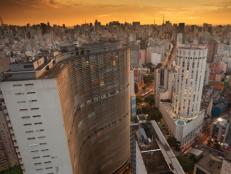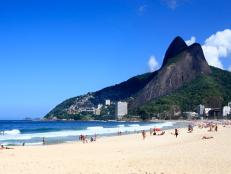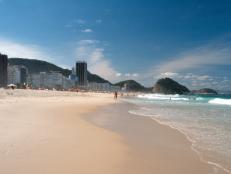World dance explorer Jaycee Gossett arrives in Salvador, Brazil, with a mission: to learn the authentic, African-derived Samba in the place it was born. She only has a few days to learn the dance so she can perform for 3 million people in the world's largest street festival -- Salvador's Carnaval.
Samba is an essential part of life in Brazil. Ever since slaves from Africa developed the dance in the 18th century, it has grown into a national pastime. But as Jaycee finds out, the dance form isn’t so easy for outsiders to pick up -- even professionals. Jaycee discovers that this samba looks nothing like the structured, Westernized version she learned on the ballroom floor. This dance is loose and free, steeped in African influence, and involves hip movements that she's never seen before.
Check out where Jaycee Gossett danced with the locals, rested her tired feet, and more in her travel guide for Brazil.
Check out our Dance the World slideshow.
Where to Dance With the Locals
Jaycee kicks off a night on the town at a popular forró dance club, Coliseu do Forro, where she gets a taste of what Brazilian dance club culture is all about. She dances with the locals and learns the latest social dance craze -- forró -- and spends the evening line dancing and spinning in the arms of strangers. Don’t like dance clubs? Don’t worry, head to a favela (town), where you’ll find the locals dancing in the streets.
Pestana Bahia hotel, with its magnificent oceanfront location and 2 panoramic swimming pools, is the perfect place to unwind and give your feet a break after a night of dancing. Jaycee relaxes by the pool after days and nights filled with samba.
During Jaycee’s first day wandering the historic old city of Salvador, she meets her sidekick Xavier Vatin in one of his favorite restaurants at the Hotel Villa Bahia, located in the heart of Salvador’s historic center, Pelourinho. They sit in the lush garden and discuss the origins of samba dance and its African influences that still exist in the Brazilian state of Bahia today.
Where to See the Heart and Soul of Brazil
Jaycee dances with the most famous samba group in Carnaval, Olodum. As the sun sets, 3 million people funnel into Salvador from all over Brazil. Jaycee dances with nearly 100 dancers through the rhythmic, colorful streets of Salvador and atop a float surrounded by throngs of crowds, relishing the euphoric feeling of community found here. If you want to see the heart and soul of Brazilian culture, don’t miss Carnaval.
Jaycee goes to a local beach to meet up with a capoeira instructor who guides her through the history and practice of this uniquely Brazilian cross between martial arts and dance. Capoeira shares a history with samba; both were developed and practiced by slaves looking to escape oppression. At the public beach, Jaycee and her instructor watch a capoeira school engage in a roda (circle).
Where to Soak Up the Culture
The historic city center is where Jaycee dances through the streets with Olodum during Carnaval. It’s also the location of the dance studio at Casa do Benin, where she asks passersby to “rate my samba,” and gets her hair braided for Carnival. If you want to see daily life in Salvador, this is the place to go.








































